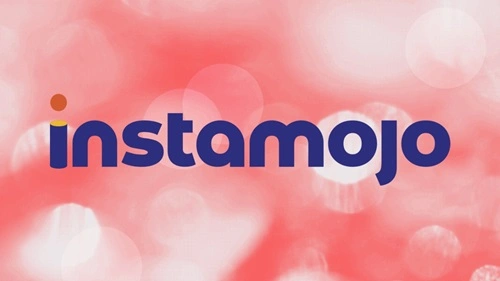Instamojo, founded in 2012 by Akash Gehani, Aditya Sengupta, Sampad Swain, and Harshad Sharma, is one of India’s leading digital payment and e-commerce platforms. Initially launched as a payment gateway for small and medium-sized enterprises (SMEs), Instamojo has grown into a full-stack business platform that provides payments, online store solutions, and credit facilities for entrepreneurs and businesses. With over 6 million merchants onboarded, Instamojo has revolutionized how micro, small, and medium enterprises (MSMEs) operate in the digital economy. This article delves into Instamojo’s business model and examines how it generates revenue.
Overview of Instamojo’s Business Model

Instamojo operates on a B2B (Business-to-Business) and B2B2C (Business-to-Business-to-Consumer) model, focusing on enabling MSMEs to go digital. Its business model revolves around:
- Digital Payment Solutions: Providing payment gateway services that enable businesses to accept payments via cards, UPI, wallets, and net banking.
- E-Commerce Enablement: Offering tools to create online stores and manage inventory and sales.
- Value-Added Services: Providing credit, marketing tools, and invoicing solutions to help businesses grow.
- Freemium Model: Offering basic services for free, with additional features available through premium plans.
Instamojo’s platform is built to simplify digital operations for small businesses, empowering them with tools to scale in the competitive market.
Revenue Streams
Instamojo generates revenue through a variety of channels, primarily targeting MSMEs and solopreneurs:
a) Transaction Fees
Instamojo’s core revenue source is the transaction fee charged on payments processed through its platform. Every time a customer pays a merchant via Instamojo, the platform takes a small percentage as commission.
Revenue Model:
- A 2% to 3% transaction fee is charged, depending on the payment mode.
- This fee includes payment processing charges, platform usage, and settlement costs.
b) Premium Subscription Plans
Instamojo offers premium subscription plans for merchants who require advanced features and services beyond the free plan.
Features in Premium Plans:
- Custom branding and domain for online stores.
- Advanced analytics and reporting.
- Priority support and faster settlements.
Revenue Model:
- Subscription fees range from ₹3,000 to ₹15,000 annually, depending on the features chosen.
c) E-Commerce Store Solutions
Instamojo provides an e-commerce storefront service that enables merchants to set up their online store with minimal technical knowledge. Merchants can manage inventory, orders, and payments all in one place.
Revenue Model:
- Charges for premium store customizations, hosting, and domain integration.
- Transaction fees on payments made through these stores.
d) Digital Products and Services
Instamojo allows merchants to sell digital products such as e-books, courses, music, and software licenses. It also provides tools for event ticketing and webinars.
Revenue Model:
- A transaction fee is charged on each sale.
- Additional charges for value-added features like marketing tools and payment optimization.
e) Lending and Credit Services
Instamojo has entered the lending space by offering working capital loans to merchants based on their transaction history and business performance.
Revenue Model:
- Interest income from loans disbursed to merchants.
- Processing fees for loan applications.
f) Payment Links
Merchants can generate and share payment links to collect payments without needing a website or storefront.
Revenue Model:
- Transaction fees are applied for payments collected through these links.
g) Advertising and Promotions
Instamojo provides promotional opportunities for businesses on its platform, including:
- Sponsored listings to enhance visibility.
- Banner ads targeting specific customer segments.
Revenue Model:
- Merchants pay for ad placements or sponsored campaigns on the platform.
h) Developer APIs
Instamojo offers APIs and SDKs for businesses to integrate payment solutions directly into their websites, mobile apps, or platforms.
Revenue Model:
- Charges for API usage and custom integrations based on transaction volumes.
i) International Payments
Instamojo allows merchants to accept payments from international customers via credit cards and PayPal.
Revenue Model:
- Higher transaction fees for international payments compared to domestic ones.
Cost Structure
Running a platform like Instamojo involves various operational costs:
a) Technology and Infrastructure
- Development and maintenance of the payment gateway and e-commerce platform.
- Investments in AI and data analytics for fraud detection and payment optimization.
b) Customer Acquisition
- Marketing and promotional expenses to onboard new merchants.
- Referral programs and partnerships with other businesses.
c) Regulatory Compliance
- Costs associated with adhering to RBI and other regulatory requirements.
- Ensuring data security and PCI DSS compliance.
d) Customer Support
- Operating a dedicated team to assist merchants with payment disputes, technical issues, and onboarding.
e) Loan Risk Management
- Monitoring and managing the risk of default for loans offered to merchants.
Unique Features Driving Revenue Growth
Instamojo employs several strategies to sustain growth and maximize revenue:
a) Freemium Model
By offering basic services for free, Instamojo attracts small businesses and upsells premium features to generate revenue.
b) All-in-One Platform
From payments to e-commerce, Instamojo provides an integrated solution that reduces the need for merchants to use multiple tools.
c) Focus on MSMEs
Catering specifically to small businesses and solopreneurs allows Instamojo to capture a niche market that is underserved by traditional payment gateways.
d) Advanced Analytics
The platform provides actionable insights to merchants, helping them optimize their sales and marketing strategies.
e) Seamless Integration
Instamojo’s APIs and developer tools make it easy for businesses to integrate its solutions into their existing workflows.
Challenges and Opportunities
Challenges
- Intense Competition: Competing with platforms like Razorpay, PayU, and CCAvenue in the payment gateway space.
- Credit Risk: Managing defaults on loans offered to merchants.
- Regulatory Challenges: Adhering to stringent compliance requirements for payment processing.
Opportunities
- Expanding E-Commerce Services: Growing demand for easy-to-use e-commerce solutions presents an opportunity to onboard more merchants.
- Tier 2 and Tier 3 Cities: Expanding into smaller towns and cities with tailored solutions for local businesses.
- Cross-Border Payments: Increasing focus on enabling merchants to cater to international customers.
- Financial Inclusion: Empowering more micro-enterprises and solopreneurs to digitize their businesses.
Financial Overview
Instamojo has raised funding from investors such as Kalaari Capital, Blume Ventures, and Gunosy Capital. With over 6 million businesses onboarded, the platform has achieved significant growth, driven by its transaction fees, subscription services, and e-commerce solutions. Its focus on MSMEs ensures consistent revenue growth in India’s expanding digital economy.
Conclusion
Instamojo’s business model combines simplicity, innovation, and affordability to address the needs of India’s MSME sector. By offering integrated payment solutions, e-commerce tools, and value-added services, Instamojo has positioned itself as a leading enabler of digital transformation for small businesses. With opportunities for growth in underserved markets and expanding its lending services, Instamojo is well-poised to sustain its growth and continue empowering India’s small business ecosystem.

